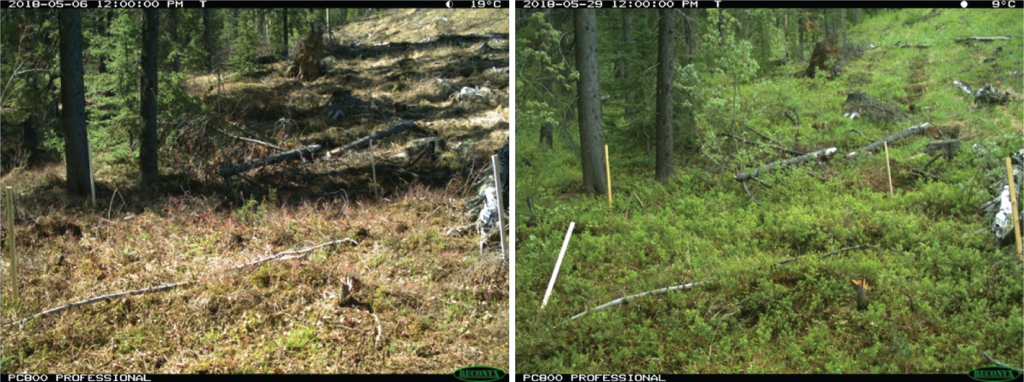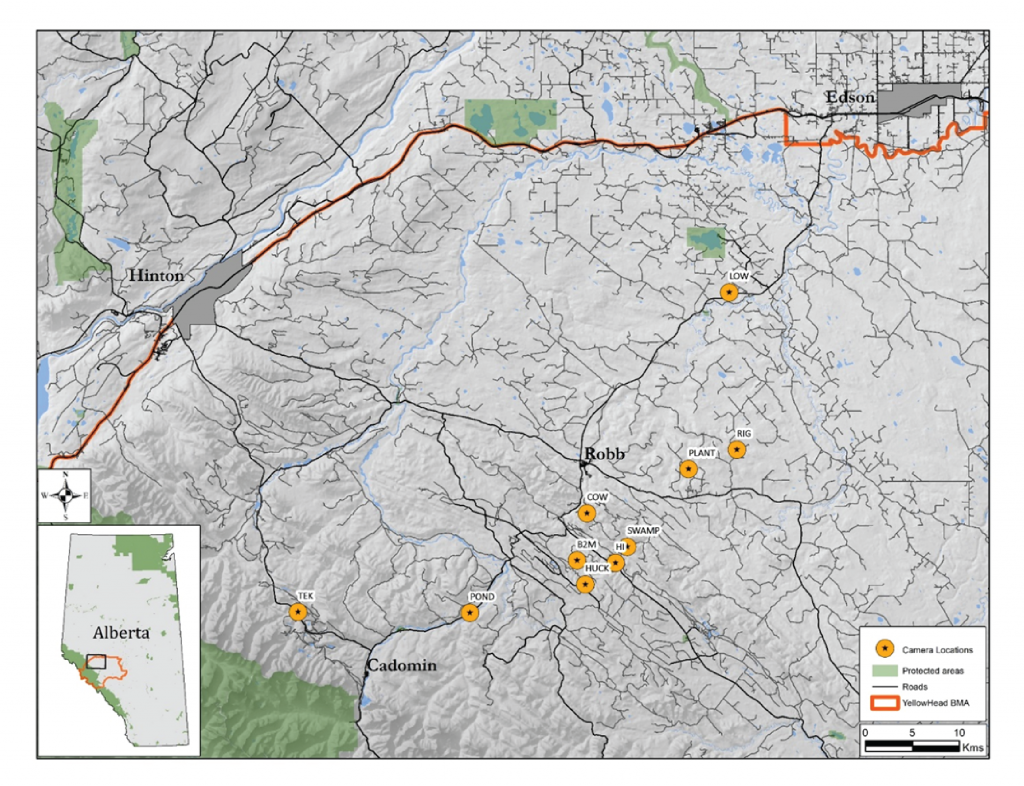Cam McClelland
Q3A.3 focusses on the phenological cycles of important root, forb and berry, vegetative grizzly bear foods. This is to be approached using MODIS and Landsat satellite data, time-lapse digital cameras and field observations. Our first objective is to create a 30m resolution and temporally dense phenology product using data fusion combining MODIS 500m resolution data and Landsat 30m resolution data. This will allow us to determine how green up maturity and green down dates have changed from 2000-2018 in the Yellowhead region. This product will be then combined with time-lapse digital camera observations from camera sites set up around the Yellowhead area. These cameras are set to observe up close phenological changes of important vegetative bear foods. Cameras were set up at the beginning of May and have been capturing seasonal changes of bear foods throughout the summer. A total of 8 species are being observed. Throughout August, berry counts will be conducted to obtain a better understanding of when berries become available.
Data will be analysed to provide insight when each food species becomes available each year. These results will be combined with the 30m resolution phenology product to model years of high and low food productivity. In conjunction with the phenological data collected in the summer of 2018, grizzly bear GPS collar data will be used to determine how grizzly bear movement and behaviour varies with changes in phenology. This research will improve our understanding of bear movements and will help our industrial partners to minimize impacts of their operations on grizzly-bears.
Figure 1: Example of green up in cutblock captured by time-lapse cameras.
Figure 2: Map of camera locations within the Yellowhead region.


